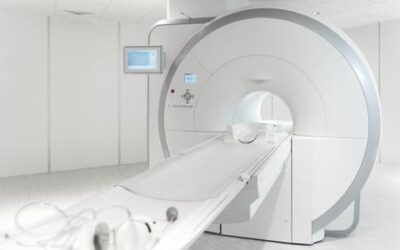Understanding Electrostatic Discharge (ESD) Damage in Integrated Circuits: A Comprehensive Analysis
We delve into the systematic methodologies used to identify and analyze electrostatic discharge (ESD) damage in integrated circuits. Understanding these damage mechanisms is crucial for improving IC design, implementing effective ESD-safe handling procedures, and ensuring the reliability and longevity of electronic devices.

Electrostatic discharge (ESD) damage is a critical concern in the manufacturing and reliability of integrated circuits (ICs). This phenomenon occurs when a sudden flow of electricity between two electrically charged objects causes component failure. Proper identification and analysis of ESD-induced damage are vital to improving IC design and implementing effective ESD-safe handling procedures.
Understanding ESD Damage
The failure of integrated circuits due to ESD events can significantly impact both manufacturers and end-users. Identifying these failures helps manufacturers refine their IC designs, particularly in enhancing input protection circuits, and also validates the need for stringent ESD-safe handling protocols. However, distinguishing ESD damage from other forms of electrical overstress (EOS) failures can be challenging. Incorrect diagnosis can lead to ineffective countermeasures and increased production costs.
%
electronic device failures
According to the ESD Association, up to 33% of electronic device failures are attributed to ESD damage during the manufacturing process, highlighting the critical need for effective ESD control measures in production environments.
annual cost of ESD damage
Industry studies estimate that the cost of ESD damage to the global electronics industry is over $5 billion annually, including losses from defective products, decreased reliability, and additional testing and repair costs.
Methodology for ESD Failure Analysis
The study by Taylor, Woodhouse, and Feasey outlines a systematic approach to ESD failure analysis. This approach involves several steps to ensure accurate identification of failure sites:
1. Initial Examination
Components suspected of ESD damage are first examined visually and electrically tested. Automatic test equipment is used to perform full parametric measurements and functional checks to determine any deviations from expected performance.
2. Curve Tracing
A curve tracer helps predict the location of potential ESD failure sites by examining the voltage-current (Z/V) characteristics of the IC pins. This technique can identify areas where the ESD transient may have caused damage.
3. Decapsulation and Microscopy
To expose the IC die, decapsulation procedures are used. The exposed die is then examined using optical and scanning electron microscopy (SEM) to locate physical damage. However, damage sites often hidden beneath metal or polysilicon layers may require further analysis.
4. Controlled ESD Stress Testing
Identical, undamaged components are subjected to controlled human-body-model (HBM) ESD testing to replicate damage conditions. This helps correlate field failures with laboratory-induced failures, providing insights into the damage mechanisms.
5. Chemical Etching
When visual evidence is insufficient, chemical etching techniques can reveal the extent of ESD-induced damage at the silicon level. This step is crucial for understanding the mechanisms behind junction shorts and other forms of ESD damage.
6. Thermal Imaging and EBIC
Techniques like liquid crystal thermal imaging and electron beam-induced current (EBIC) imaging help detect ‘hot spots’ and leakage currents, respectively, which indicate areas of ESD damage.
Findings and Implications
The study found that ESD-induced junction shorts result from a combination of localized heating at the breakdown site and the heat generated by the discharge current. The damage is often more severe when the ESD transient is of higher magnitude or opposite polarity. Moreover, the sensitivity of an IC to ESD damage is closely related to the physical spacing between input contact windows and nearby metallization.
Conclusion
Accurate identification and analysis of ESD damage are essential for improving IC reliability and ensuring the effectiveness of ESD protection measures. The methodologies outlined in this study provide a robust framework for failure analysis, enabling better understanding and prevention of ESD-related failures.
References
- Taylor, R.G., Woodhouse, J., & Feasey, P.R. “A Failure Analysis Methodology for Revealing ESD Damage to Integrated Circuits,” Quality and Reliability Engineering International, 1985.
- McAteer, O.J., & Twist, R.E. “Analysis of Electrostatic Discharge Failures,” EOS/ESD Symposium Proceedings, 1981.
- Noel, P.H., & Dreibelbis, D.H. “ESD or EOS: Can Failure Analysis Tell the Difference?” EOS/ESD Symposium Proceedings, 1983.
- Shaw, R.N., & Enoch, R.D. “A Programmable Equipment for Electrostatic Discharge Testing to Human Body Models,” EOS/ESD Symposium Proceedings, 1983.
- DeChiaro, L.F. “Electro-thermomigration in NMOS LSI Devices,” International Reliability Physics Symposium Proceedings, 1981.
- Turner, T.E., & Morris, S. “Electrostatic Sensitivity of Various Input Protection Networks,” EOS/ESD Symposium Proceedings, 1980.
Wanna know more? Let's dive in!
ISO 31000 vs. ISO 27005: Differences and Similarities
[dsm_gradient_text gradient_text="ISO 31000 vs. ISO 27005: Differences and Similarities" _builder_version="4.27.0" _module_preset="default" header_font="Questrial|||on|||||" header_text_align="center" header_letter_spacing="5px" filter_hue_rotate="100deg"...
Ensuring Quality in Medical Devices: The Role of Process Validation and Revalidation
[dsm_gradient_text gradient_text="Ensuring Quality in Medical Devices: The Role of Process Validation and Revalidation" _builder_version="4.27.0" _module_preset="default" header_font="Questrial|||on|||||" header_text_align="center" header_letter_spacing="5px"...
AI in Medical Devices: Navigating the Regulatory and Ethical Minefield
[dsm_gradient_text gradient_text="AI in Medical Devices: Navigating the Regulatory and Ethical Minefield" _builder_version="4.27.0" _module_preset="default" header_font="Questrial|||on|||||" header_text_align="center" header_letter_spacing="5px"...
Understanding ISO 31000 vs ISO 14971: Similarities and Differences in Risk Management Standards
[dsm_gradient_text gradient_text="Understanding ISO 31000 vs ISO 14971: Similarities and Differences in Risk Management Standards" _builder_version="4.27.0" _module_preset="default" header_font="Questrial|||on|||||" header_text_align="center"...
Beyond FMEA: Rethinking Risk Management in the MedTech Industry
[dsm_gradient_text gradient_text="Beyond FMEA: Rethinking Risk Management in the MedTech Industry" _builder_version="4.27.0" _module_preset="default" header_font="Questrial|||on|||||" header_text_align="center" header_letter_spacing="5px" filter_hue_rotate="100deg"...
Bridging Health and Sustainability: ISO 13485 Meets Climate Change
[dsm_gradient_text gradient_text="Bridging Health and Sustainability: ISO 13485 Meets Climate Change" _builder_version="4.27.0" _module_preset="default" header_font="Questrial|||on|||||" header_text_align="center" header_letter_spacing="5px" filter_hue_rotate="100deg"...
ISO 9001 vs. ISO 13485: Understanding the Similarities and Differences
[dsm_gradient_text gradient_text="ISO 9001 vs. ISO 13485: Understanding the Similarities and Differences" _builder_version="4.27.0" _module_preset="default" header_font="Questrial|||on|||||" header_text_align="center" header_letter_spacing="5px"...
IATF 16949 and Customer-Specific Requirements: Meeting and Exceeding Expectations
[dsm_gradient_text gradient_text="IATF 16949 and Customer-Specific Requirements: Meeting and Exceeding Expectations" _builder_version="4.27.0" _module_preset="default" header_font="Questrial|||on|||||" header_text_align="center" header_letter_spacing="5px"...
IATF 16949: Navigating the Core Tools – APQP, PPAP, FMEA, MSA, and SPC
[dsm_gradient_text gradient_text="IATF 16949: Navigating the Core Tools - APQP, PPAP, FMEA, MSA, and SPC" _builder_version="4.27.0" _module_preset="default" header_font="Questrial|||on|||||" header_text_align="center" header_letter_spacing="5px"...
AI for Automated Safety Compliance: Streamlining ISO 45001 Processes
[dsm_gradient_text gradient_text="AI for Automated Safety Compliance: Streamlining ISO 45001 Processes" _builder_version="4.27.0" _module_preset="default" header_font="Questrial|||on|||||" header_text_align="center" header_letter_spacing="5px"...
The Role of Leadership in ISO 45001: Driving a Commitment to Safety
[dsm_gradient_text gradient_text="The Role of Leadership in ISO 45001: Driving a Commitment to Safety" _builder_version="4.27.0" _module_preset="default" header_font="Questrial|||on|||||" header_text_align="center" header_letter_spacing="5px"...
Mental Health and ISO 45001: Addressing Psychological Risks in the Workplace
[dsm_gradient_text gradient_text="Mental Health and ISO 45001: Addressing Psychological Risks in the Workplace" _builder_version="4.27.0" _module_preset="default" header_font="Questrial|||on|||||" header_text_align="center" header_letter_spacing="5px"...












